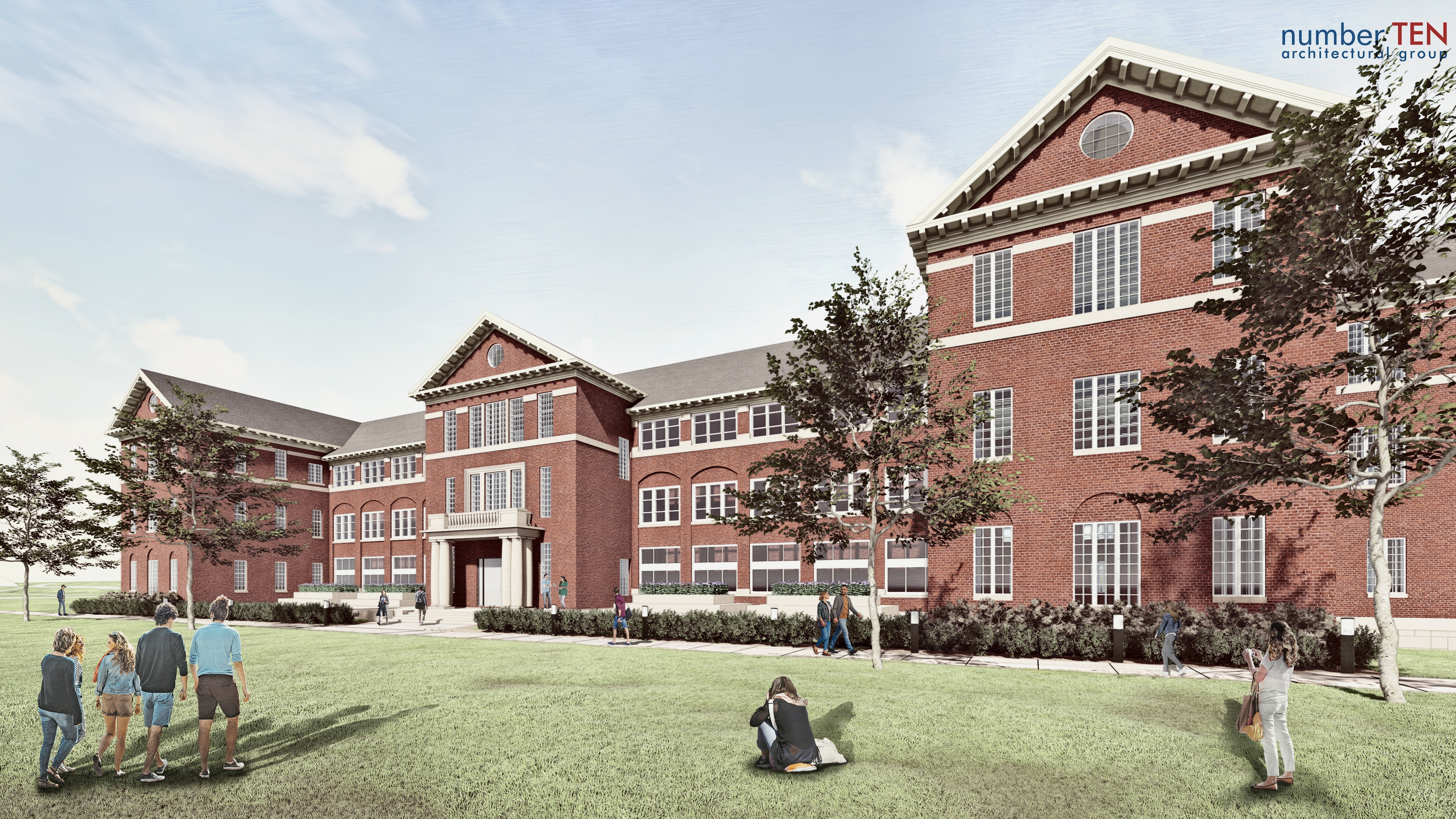Assiniboine’s next generation of agriculture building on flagship campus
February 15, 2022
The home of Assiniboine Community College’s continued expansion and relocation has a remarkable history pre-dating the college. The next chapter is still being written, and the college is working to make it a strong and impactful one for agriculture.
As Assiniboine’s North Hill campus in Brandon continues its evolution, the next step— the future of training at Manitoba’s ag college— is the Prairie Innovation Centre.
Nearly 15 years ago, Assiniboine’s North Hill journey began with the introduction of the Manitoba Institute of Culinary Arts (MICA) in the former Brandon Mental Health Centre’s Nurses’ Residence. This iconic heritage building was built between 1921-23 and has since become a renowned site for culinary and hospitality education at the college. It is also home to prestigious community events throughout the year, which serve as practical learning opportunities for students. The building blends modern learning spaces with a historic feel—from the classic heritage dining room to the state-of-the-art teaching kitchen and culinary theatre.
And within these walls and throughout the entire North Hill campus, programming uniquely bridges the college’s School of Agriculture and Environment, tying the first venture of the North Hill campus in seamlessly with the next.
“The agriculture industry is evolving to a place where technology and food innovations are fundamental to things like agronomy, farming or land management,” said Tim Hore, Dean of the School of Agriculture and Environment at Assiniboine. “You can’t do one without having knowledge of the other parts.”

Integration along the food chain has been a focus of Assiniboine since the college renewed its vision for agriculture, creating the aforementioned academic school, where traditional agriculture programs like Agribusiness were brought under the same umbrella as food and technology programs like Culinary Arts and Civil Technician.
The way the campus plan has unfolded to date enables a true Field to Fork experience. For example, some of the produce used in the Culinary Arts program is grown right on campus in the Sustainable Greenhouse and adjacent grow plots, which were additions to the campus in 2013. Through programs like Sustainable Food Systems and Horticultural Production, also housed at the North Hill campus, faculty researchers lead various applied research projects that both enhance industry innovation and sustainability, and give students hands-on experience.
As Assiniboine edges closer to bringing the next significant development project to life, reflecting on the campus’s journey to date has made clear that it’s no fluke. New and expanded agriculture training is needed now, at a time when the labour gap in agriculture is growing to a point where it’s expected that one in three jobs in Canada will go unfilled by 2029. It’s needed here in Western Manitoba, where the college has the capability to combine indoor and outdoor learning spaces for seamless hands-on experimentation and training. The Prairie Innovation Centre has been a long time coming.
In 2010, shortly after MICA was established, the college set its sight atop the hill to the former Pine Ridge Building, originally built from 1931-32. This would become the Len Evans Centre for Trades and Technology. The building today welcomes students to the college’s School of Trades, and similarly to MICA, the facility itself is a delightful mix of old and new, as the former brick Pine Ridge building has been renovated and merged with a new steel structure. Another similarity to MICA—this building has various intersections with agriculture. There’s the obvious in programs like Agriculture Equipment Operator. But the industry and community needs connect as well. In fact, many of the industry partners who’ve come aboard the Prairie Innovation Centre project were also instrumental in this project and have been continued supporters of trades programming at the college.
To reflect on the North Hill campus—the 15 years that have brought us here— we think of the countless ways that Assiniboine has connected with students, staff and the community. This campus has seen pillars like heritage, sustainability, innovation and partnership come together and will continue to do so as we eye the most ambitious college project to date in the Prairie Innovation Centre.



